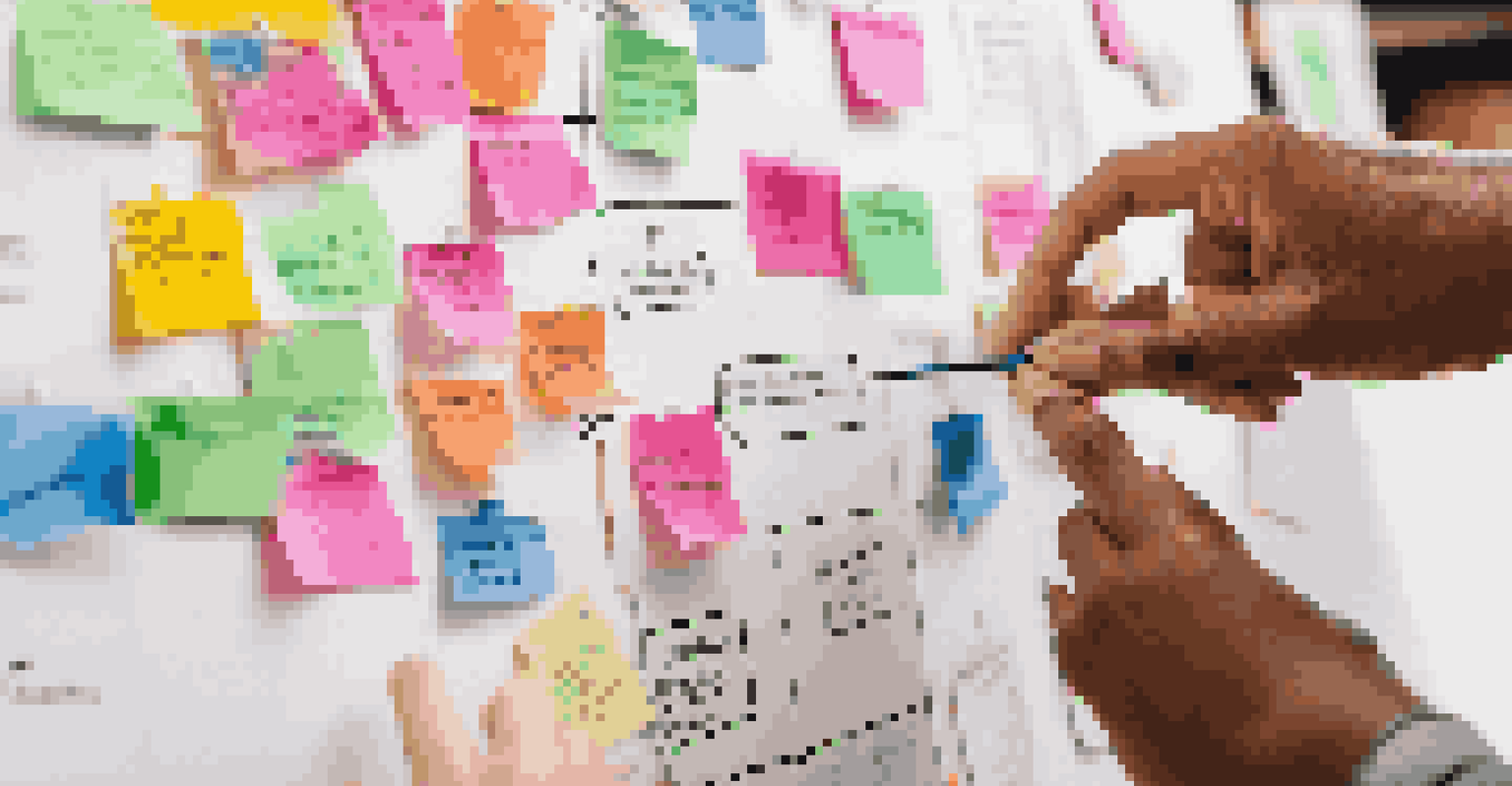Building Effective Partnerships for Education Policy Change

Understanding the Importance of Partnerships in Education
Partnerships play a crucial role in shaping effective education policies. By bringing together diverse stakeholders, including educators, parents, and community leaders, we can create a more holistic approach to education. This collaboration allows for a broader range of perspectives, ensuring that policies are rooted in real-world needs and experiences.
Alone we can do so little; together we can do so much.
Moreover, partnerships can amplify voices that are often overlooked in the policy-making process. When various groups unite, they can advocate more powerfully for necessary changes. This collective action not only boosts credibility but also fosters a sense of shared responsibility for educational outcomes.
Ultimately, understanding the importance of partnerships is the first step toward driving meaningful change. It sets the stage for collaboration and opens the door to innovative solutions that might not have emerged in isolation.
Identifying Key Stakeholders for Collaboration
Identifying the right stakeholders is crucial for successful partnerships in education policy. These stakeholders can include teachers, administrators, parents, students, and local community organizations. Each group brings unique insights and experiences that can enrich the policy-making process, making it more comprehensive and effective.

To ensure that all voices are heard, it's important to map out who should be included in these discussions. This might involve conducting surveys or focus groups to get a better understanding of the community's needs. By doing so, you can foster an inclusive environment where everyone feels valued and empowered to contribute.
Remember, the more diverse your group of stakeholders, the more innovative and effective your solutions are likely to be. Collaboration is not just about gathering opinions; it's about creating a collective vision for better education.
Establishing Clear Goals and Objectives
Once stakeholders are identified, the next step is to establish clear goals and objectives for the partnership. This involves outlining what you aim to achieve together, whether it's improving student outcomes or advocating for new funding initiatives. Having a shared vision helps keep everyone aligned and focused on the end goal.
Collaboration allows teachers to meet students' individual needs.
Setting specific, measurable, achievable, relevant, and time-bound (SMART) objectives can provide clarity and direction. For instance, if your goal is to increase literacy rates, you might set an objective to implement a specific reading program within a year. This clarity not only helps in planning but also in assessing progress over time.
When everyone understands what success looks like, it becomes easier to work collaboratively. Regular check-ins can help ensure that the partnership remains on track and that any necessary adjustments are made along the way.
Creating a Communication Framework
Effective communication is the backbone of any successful partnership. Establishing a clear communication framework helps ensure that all stakeholders are informed, engaged, and able to contribute meaningfully. This could involve regular meetings, newsletters, or digital platforms for sharing updates and discussing challenges.
It's essential to create a culture of open dialogue where everyone feels comfortable expressing their thoughts and ideas. Encouraging feedback can lead to continuous improvement and innovation. For instance, using anonymous surveys can help gather honest opinions about the partnership's effectiveness.
Ultimately, fostering a transparent communication environment strengthens trust among partners. This trust is vital for navigating challenges and celebrating successes together.
Leveraging Data for Informed Decision Making
Data plays a critical role in guiding education policy decisions. By collecting and analyzing relevant data, partnerships can identify trends, strengths, and areas for improvement. For example, tracking student performance metrics can provide valuable insights into which initiatives are working and which need adjustment.
Moreover, data helps to justify the partnership's efforts to external stakeholders, such as government agencies or funding bodies. Presenting compelling data can demonstrate the impact of your initiatives, making it easier to secure necessary support and resources.
It's important to remember that data should be used ethically and responsibly. Ensuring privacy and confidentiality while leveraging data is vital for maintaining trust among stakeholders.
Building Capacity Within the Partnership
Building capacity within the partnership is essential for sustaining long-term change. This involves providing training, resources, and support to stakeholders so they can effectively contribute to the partnership’s goals. For instance, workshops on advocacy skills can empower parents to engage more actively in policy discussions.
Additionally, fostering leadership within the group can help ensure that the partnership remains dynamic and responsive. Identifying and nurturing leaders among stakeholders can bring fresh perspectives and drive initiatives forward.
Ultimately, investing in capacity-building not only enhances the partnership's effectiveness but also promotes ownership and commitment among all involved.
Evaluating and Celebrating Successes
Regular evaluation of the partnership's efforts is key to understanding its impact. This involves assessing whether the established goals and objectives are being met and identifying areas for improvement. Conducting evaluations at regular intervals helps to maintain accountability and transparency.
Celebrating successes, big or small, is equally important. Recognizing achievements fosters a positive culture and motivates stakeholders to continue their efforts. This could be as simple as sharing success stories in newsletters or hosting events to acknowledge the hard work of everyone involved.

In the long run, evaluation and celebration not only promote continuous improvement but also reinforce the value of collaboration in driving education policy change.